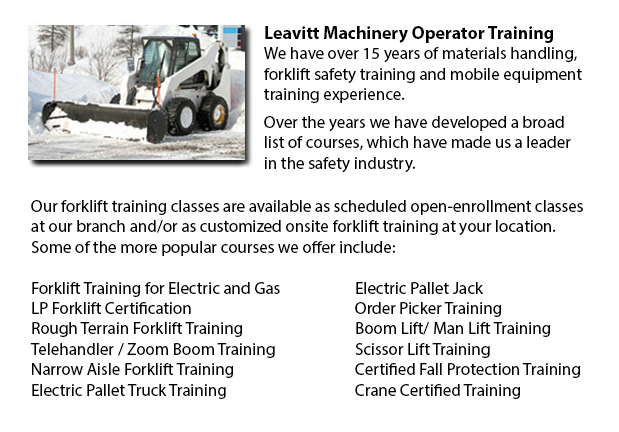
Skid Steer Ticket Penticton - The lift arms on the skid-steer loader are situated beside the driver along with pivots at the back of the driver's shoulders. These features makes the skid-steer loader different compared to the conventional front loader. Because of the operator's nearness to moving booms, early skid loaders were not as safe as conventional front loaders, particularly in the operator's entry and exit. Modern skid-steer loaders now have many features in order to protect the driver including fully-enclosed cabs. Like other front loaders, the skid-steer model could push materials from one place to another, is capable of loading material into a trailer or a truck and can carry material in its bucket.
Operation
There are a lot of times where the skid-steer loader could be used rather than a large excavator on the job location for digging holes from within. To begin, the loader digs a ramp to be used to excavate the material out of the hole. As the excavation deepens, the machine reshapes the ramp making it longer and steeper. This is a remarkably helpful method for digging below a building where there is not adequate overhead clearance for the boom of a large excavator. For instance, this is a common scenario when digging a basement underneath an existing building or home.
The skid-steer loader attachments add much flexibility to the machinery. For instance, conventional buckets on the loaders could be replaced attachments powered by their hydraulics consisting of snow blades, cement mixers, pallet forks, backhoes, tree spades, sweepers and mowers. Various other popular specialized buckets and attachments include angle brooms, dumping hoppers, wood chipper machines, grapples, tillers, stump grinders rippers, wheel saws, snow blades, and trenchers.
History
During the year 1957, the very first 3-wheeled, front-end loader was invented in Rothsay, in the state of Minnesota by brothers Cyril and Louis Keller. The brothers invented the loader in order to help a farmer mechanize the method of cleaning turkey manure from his barn. This particular machine was compact and light and had a rear caster wheel which allowed it to maneuver and turn around within its own length, enabling it to perform similar tasks as a traditional front-end loader.
The Melroe brothers of Melroe Manufacturing Company in Gwinner, N.D. acquired in 1958, the rights to the Keller loader. The business then employed the Keller brothers to assist with development of the loader. The M-200 Melroe was the outcome of this particular partnership. This model was a self-propelled loader which was launched to the market during the year 1958. The M-200 Melroe featured a a 750 lb capacity, two independent front drive wheels, a rear caster wheel and a 12,9 HP engine. By nineteen sixty, they changed the caster wheel with a rear axle and introduced the first 4 wheel skid steer loader that was referred to as the M-400.
The M-400 immediately became the Melroe Bobcat. usually the term "Bobcat" is utilized as a generic term for skid-steer loaders. The M-440 was powered by a 15.5 HP engine and had 1100 lb rated operating capacity. The company continued the skid-steer development into the mid nineteen sixties and introduced the M600 loader.
-
Forklift Certification Schools Penticton
Forklift Certification Schools Penticton - In North America, forklift certification is mandatory, making forklift training programs essential for both the business and their employees working as operators of forklifts. Forklift training focuses on sa... More -
Telehandler Training Courses Penticton
Telehandler Training Courses Penticton - The employer has the responsibility to make sure that their personnel are trained to work proficiently utilizing telehandler machinery. The workers have to be assessed for their ability to utilize the machine.... More -
Certified Fall Protection Training in Penticton
There are many injuries at work linked to falling and lots of fall-related deaths reported each and every year. Most of these instances might have been prevented with better training, better precautions in place, and by properly equipping employees b... More -
Zoom Boom Training Penticton
Zoom Boom Training Penticton - Zoom Boom Training is designed to train operators on variable reach forklifts. The objectives of the training are to impart an understanding of the physics of the machine, and to outline the operator's job. This course... More -
Crane Training Schools Penticton
Crane Training Schools Penticton - We have designed various Mobile Crane Operation programs at our Crane Training Schools. These programs are recommended for the experienced operator who needs re-certification or certification, and for inexperienced... More -
Aerial Lift, Boom Lift, Man Lift, Scissor Lift Training in Penticton
Lift tables or also referred to as scissor hoists can lift up both individuals and materials vertically. They are normally utilized in industrial, construction and commercial environments. Normally, the use of a scissor forklift is to lift and lower... More -
Forklift Training Program Penticton
Forklift Training Program Penticton - The forklift is a common powered industrial vehicle which is in wide use nowadays. They are occasionally known as hi los, lift trucks or jitneys. A departments store will utilize the forklift to unload and load m... More -
Overhead Crane Training Penticton
Overhead Crane Training Penticton - An overhead crane is a large crane used to move and lift huge, heavy objects that cannot be lifted by hand. An overhead crane is normally fixed in position while in use. These machines are capable of moving huge vo... More

Forklift Training Penticton
TOLL FREE: 1-888-254-6157
Penticton, British Columbia
forklifttrainingpenticton.com
Email Us
About Us


